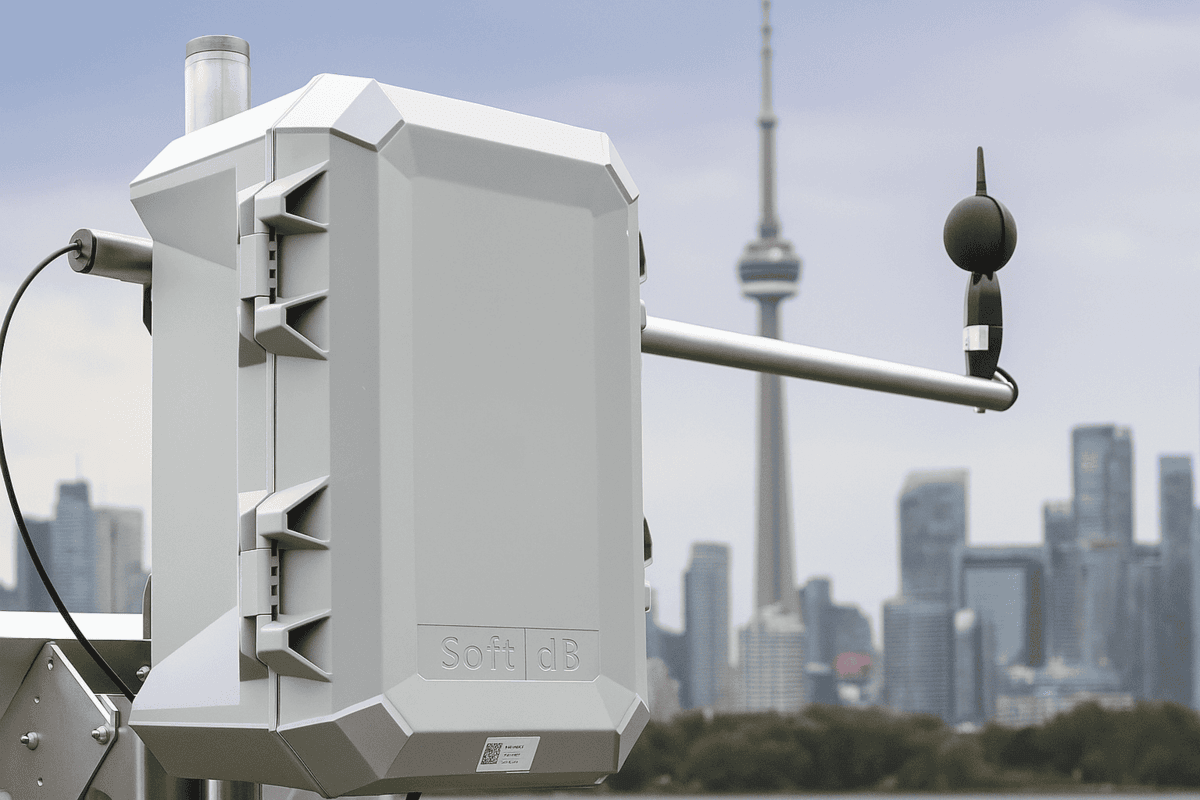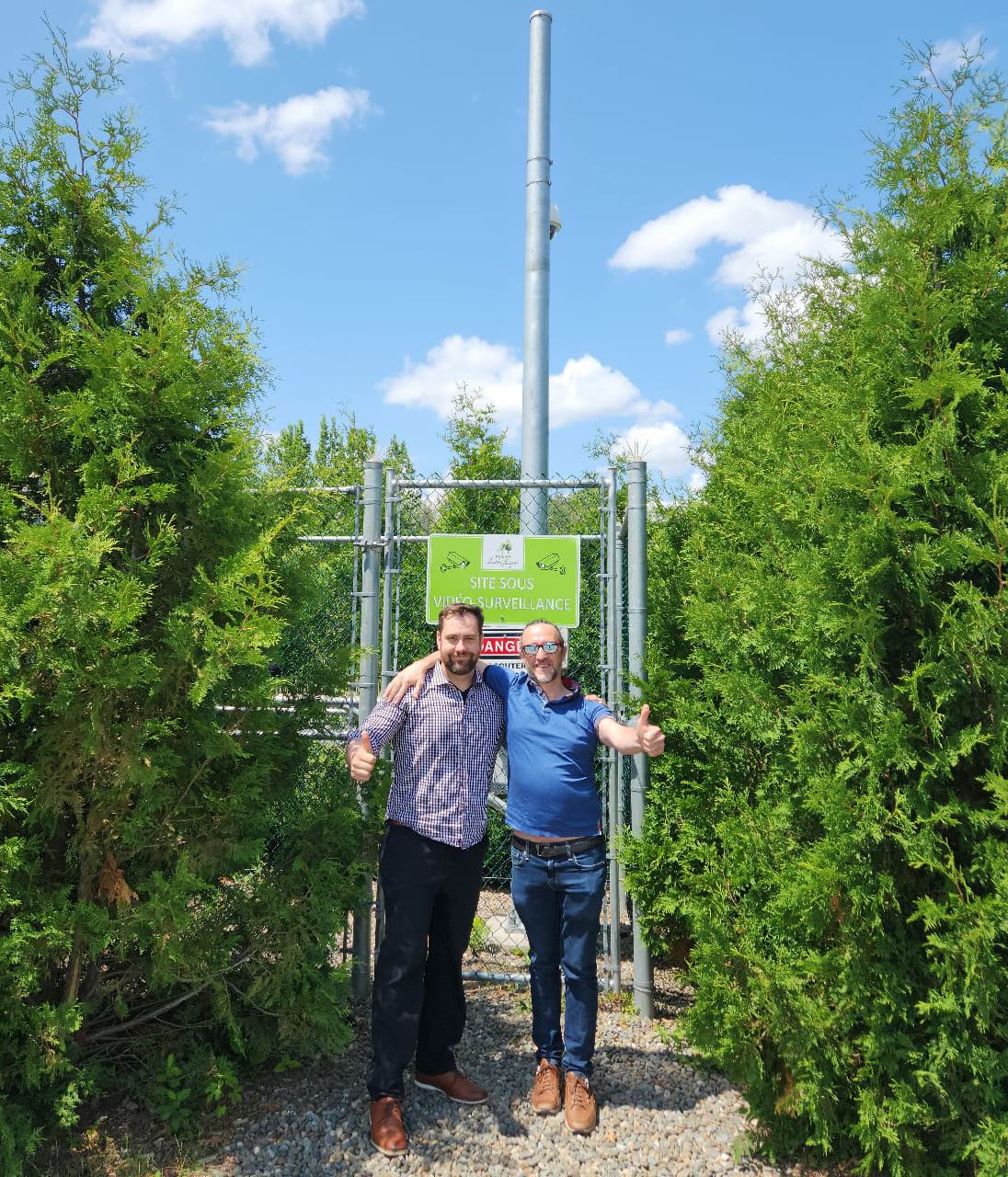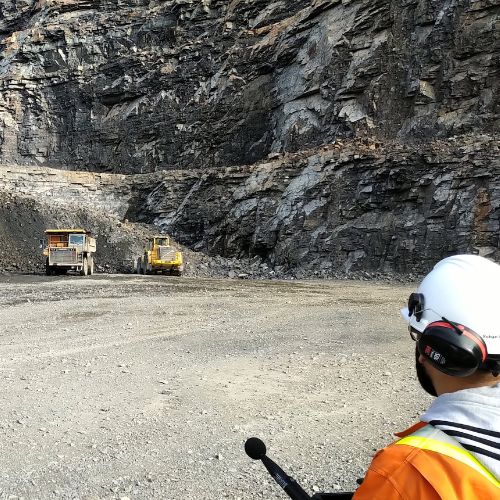|
The NPC-300 Environmental Noise Guideline—Stationary and Transportation Sources—Approval and Planning guideline is a comprehensive framework developed by Ontario’s Ministry of the Environment, Conservation and Parks (MECP) to help businesses reduce their noise pollution by setting clear standards for sound emissions and ensuring environmental compliance. A thorough understanding of the Noise Pollution Control (NPC) document NPC-300 can help business owners achieve environmental compliance while maintaining positive relationships with neighbouring communities. In this article, we will explore the NPC-300 guideline to understand how it sets sound level limits and influences land-use planning. We will also discuss compliance requirements as well as how to monitor and assess noise levels in order to maintain ongoing compliance. |
Purpose of NPC-300 and Key Takeaways from Prior Versions of Noise Guidelines
First published in 2013, the NPC-300 document consolidates and updates older versions of guidelines, providing a standardized approach to assess and control sound emissions from various sources, including industrial, commercial, and transportation activities, in accordance with the new noise regulations.
In particular, NPC-300 supersedes four previous publications: LU-131, NPC-205, NPC-232, and the supplementary Noise Assessment Criteria in Land-Use Planning: Requirements, Procedures and Implementation.
This unification aims to harmonize noise assessment criteria for municipalities to consider in the land-use planning process when approving new developments near existing noise sources. The guideline also provides sound level limits for stationary and transportation noise sources that are applied by the MECP and supports the legislation in the context of environmental noise compliance.
Noise Measurements in NPC-300
Before delving deeper into NPC-300, let's first take a quick look at how noise is measured and presented in reports. Having a basic understanding of what a noise assessment is will make the guideline easier to follow.
We measure sound in decibels (dB). Because the human ear perceives loudness on a logarithmic scale, a doubling of sound pressure doesn’t correspond to a doubling in perceived loudness. To better reflect how we actually hear sounds, measurements are often presented in A-weighted decibels (dBA), which account for the ear’s varying sensitivity to different frequency bands and provide a more accurate representation of perceived noise levels.
We typically use two different metrics for quantifying noise.
On the one hand, we evaluate continuous noise using the One-Hour Equivalent Sound Level (Leq) which represents the average sound energy over a one-hour period. It reflects the steady sound level that would contain the same total energy as the varying noise levels recorded during that time. This value is calculated by averaging the sound energy throughout the hour.
On the other hand, we evaluate impulsive noise, such as banging or hammering, using the Logarithmic Mean Impulse Sound Level (LLM). It serves as a statistical measure that captures both the strength and duration of impulsive noise events within a defined time frame, typically one hour.
Now that we’ve covered the basics of noise metrics, let’s take a look at the main elements of NPC-300.
Noise-Sensitive Land Uses and Points of Reception
Noise-sensitive land uses are locations that are particularly vulnerable to the impacts of environmental noise due to their function or occupancy. These include residential buildings such as dwellings, hotels and motels, educational facilities, hospitals, daycares, health care facilities, emergency shelters, community centres, places of worship, and detention centres, although places of worship on commercial or industrial lands are not considered in the NPC-300 guideline.
However, it is worth noting that a land use that would normally be considered noise-sensitive but is located within the property boundaries of a stationary source is not considered a noise-sensitive land use under NPC-300.
The assessment of noise near a noise-sensitive land is performed at a critical point of reception, which is any location where noise from a stationary and/or transportation source is expected to have a significant influence. The NPC-300 guideline generally categorizes points of reception into the following types:
- Plane of Window (POW): location of the centre of a window near a noise-sensitive space.
- Outdoor Point of Reception (OPOR): any location of a noise-sensitive space exposed to stationary noise sources, such as backyards, balconies, etc.
- Outdoor living area (OLA): outdoor locations near a noise-sensitive space exposed to transportation noise sources (road and rail traffic), such as backyards, balconies, etc.
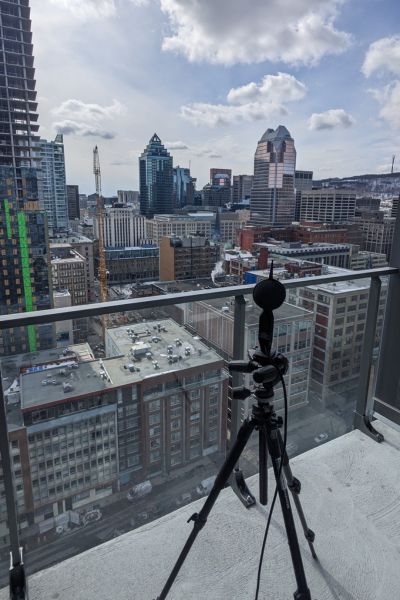
Navigating the Land-Use Planning Process
An initial noise assessment should be conducted early in the land-use planning process to determine the feasibility of the project. The development proponent must show that sound level limits can be met, identify necessary noise control measures, and commit to implementing them.
NPC-300 categorizes land uses into four area classes based on their sensitivity to noise. This classification determines the acceptable noise levels for each area, with stringent limits applied to more sensitive zones.
The classification of an area is typically based on factors such as the distance of the point of reception from nearby roads, the volume of road traffic, and the nature of land uses and activities in the area according to the time period.
Classes 1, 2 and 3 Areas
Class 1 areas are defined as urban areas with residential, commercial and institutional land uses with an acoustical environment typical of a major population centre.
Class 2 areas are defined as urban areas with mixed land uses, but where the background noise is dominated by the activities of people, usually road traffic, during daytime and evening, and natural environment and infrequent human activity during nighttime.
Class 3 areas are defined as rural areas with limited human activity and natural surroundings where the acoustical environment is dominated by natural sounds.
Introduction of Class 4 Areas
A significant innovation in NPC-300 is the establishment of Class 4 areas which are intended for developments of new noise-sensitive land uses located near existing noise sources, such as a residential development located near an industrial facility. Class 4 areas permit less stringent sound level limits compared to the stricter standards applied in Class 1, 2 and 3 areas.
This adjustment addresses previous inconsistencies where LU-131 allowed some flexibility for municipalities to approve developments in noisy areas, potentially conflicting with stricter limits in NPC-205 and NPC-232.
Once a site or area is designated as Class 4, it will retain that classification as long as the stationary noise sources remain in place. Nearby or adjacent existing noise-sensitive land uses, such as those classified as Class 1 or Class 2, will not be reclassified unless they are replaced, redeveloped, or rebuilt. Only then could they potentially be reclassified as Class 4 areas.
Sound Level Limits and Noise Assessment Criteria
NPC-300 provides standardized sound level limits across areas, eliminating discrepancies between LU-131 and stationary noise source guidelines, simplifying compliance. It also introduced a graduated scale for assessing impulse sounds such as banging, hammering or explosive sounds, replacing the previous binary classification of frequent or infrequent impulses.
Stationary Sources
The estimation of the Leq and LLM of the stationary source under assessment needs to reflect the principle of predictable worst-case noise impact, which corresponds to the greatest noise impact relative to the applicable limit.
The following table provides sound level limits for steady and varying noise from an outdoor point of reception and plane of window of a noise-sensitive space according to the time of day and area. These limits are evaluated in One-Hour Equivalent Sound Level (Leq) using A-weighted sound pressure level decibels (dBA).
| Time of Day | Class 1 Area | Class 2 Area | Class 3 Area | Class 4 Area |
|---|---|---|---|---|
| 07:00-19:00 | 50 | 50 | 45 | 55(60) |
| 19:00-23:00 | 50 | 45(50) | 40 | 55(60) |
| 23:00-07:00 | 45 | 45 | 40 | 55 |
Note: for Class 1, 2 and 3, the plane of window limits apply to a window assumed to be open, while for Class 4, the plane of window limits apply to a window assumed to be closed.
Additionally, NPC-300 specifies sound level limits for noise from impulsive sources at both plane of window and outdoor point of reception locations, based on the number of impulses occurring within an hour. These exclusion limits are detailed in Tables B-3 and B-4 of the NPC-300 document.
It is worth mentioning that stationary sources may also be assessed based on potential points of reception situated on vacant lands, provided that noise-sensitive land uses are permitted under the zoning regulations.
Emergency Equipment and Other Sources
No sound level limits apply to emergency equipment operating in emergency situations. Although, for testing purposes, the sound level limit is 5 dB greater than the standard limits for the area classification. Note that periodic testing of emergency equipment is assessed separately from other stationary sources under NPC-300.
For layover sites, the permitted sound level at any time is the greater of 55 dBA (measured as Leq) or the background sound level.
Transportation Sources
For transportation noise from roadways and railways, noise is measured at an outdoor living area, which means the part of a noise-sensitive land use that is intended and designed for the quiet enjoyment of the outdoor environment and readily accessible from a building. Outdoor living areas include backyards, front yards, gardens, terraces and patios.
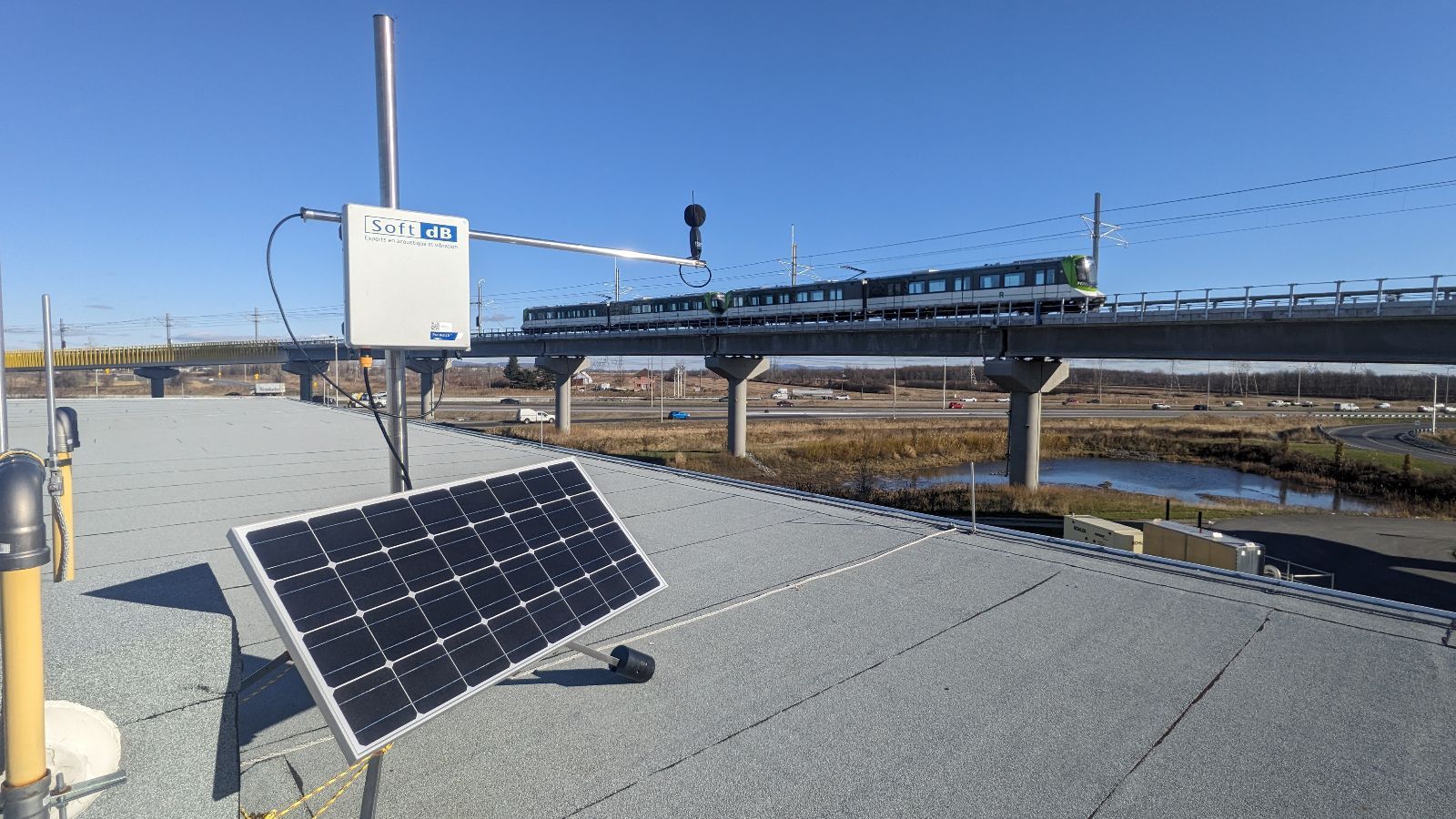
The following tables present exclusion limits for roadway and railway noise affecting both outdoor living areas and indoor noise-sensitive spaces, based on the time of day. These limits are expressed in A-weighted decibels (dBA) and are evaluated using the 16-hour Equivalent Sound Level (Leq(16)) for outdoor living areas and the One-hour Equivalent Sound Level (Leq) for indoor spaces.
| Time of Day | Leq(dBA) |
|---|---|
| 07:00-23:00 | 50 |
| Type of Space | Time of Day | Leq(dBA) Road | Leq(dBA) Rail |
|---|---|---|---|
| Living/dining, den areas of residences, hospitals, nursing homes, schools, daycare centres, etc | 07:00-23:00 | 45 | 40 |
| Living/dining, den areas of residences, hospitals, nursing homes, etc. (except schools or daycare centres) | 23:00-07:00 | 45 | 40 |
| Sleeping quarters | 07:00-23:00 | 45 | 40 |
| Sleeping quarters | 23:00-07:00 | 40 | 35 |
Regarding air traffic noise, the current NEF/NEP (Noise Exposure Forecast/Noise Exposure Projection) contours for airports determined by Transport Canada are applied. The outdoor living area limit in terms of NEF/NEP is 30 at all times. Indoor aircraft noise limits are 0 in sleeping quarters and 5 otherwise.
Background Noise
Background noise means the ambient sound level that is present in the environment, produced by noise sources other than the source under assessment. It is expressed in terms of Leq. Background noise is usually generated by road traffic unless the area is far removed from human activity.
NPC-300 revises how background noise levels are measured and incorporated into assessments. Short duration noises like aircraft flyovers or train pass-bys are typically excluded from background sound level assessments.
However, under specific conditions, train pass-by noise may be included in Class 1, 2, and 4 areas, if located within 300 metres of railway lines with at least 40 daytime or 20 nighttime trains. The equivalent sound levels from these pass-bys should be reduced by 10 dBA and then added logarithmically to the higher of the applicable limit or the background.
Compliance Requirements for Business Owners.
Under the NPC-300 guideline, noise monitoring and control measures are essential for ensuring noise-sensitive land-use proposals meet acceptable noise criteria and environmental compliance. In the planning process of any developments, the proponent needs to ensure compliance with the requirements of the local planning authority.
A detailed noise study for land-use planning is recommended and specific approval such as an Environmental Compliance Approval (ECA) or registration to the Environmental Activity and Sector Registry (EASR) (insert URL to Soft dB’s ECA vs. EASR blog article) may be required by the land-use planning authorities.

Monitoring and Assessing Noise Levels for NPC-300 Compliance
With 30 years of experience, Soft dB’s acousticians specialize in monitoring and assessing sound emissions and vibrations. We act as the intermediary between industry and authorities (ministry, municipalities, cities, etc.) to ensure compliance by following the NPC-300 guideline strictly and ethically.
Noise monitoring is typically required in scenarios such as after receiving noise complaints, when applying for a MECP approval, or following significant changes to facility operations. Monitoring methods range from temporary manual spot checks to more sophisticated unattended noise monitoring stations, often conducted with the help of our acoustics consultants and specialized equipment and sensors.
In order to maintain ongoing compliance with NPC-300 for situations with varying industrial operations over extended periods of time, typically spanning across multiple months (construction activity happening near a sensitive space) or sometimes years (mining operations at a rural location), we usually recommend setting up continuous monitoring stations, especially for facilities near noise-sensitive land uses. Noise monitoring data is particularly valuable when submitting reports to regulatory authorities, such as in the case of a noise complaint.
Implementing Noise Control Measures
If measured sound levels exceed the thresholds set by NPC-300, it is important to develop a mitigation plan.
Once data is collected and analyzed, Soft dB’s experienced acoustics consultants can recommend effective mitigation measures in order to maintain ongoing compliance. Such measures can also include incorporating sound insulating elements into building designs such as glazed balconies, installing acoustic barriers to reduce noise transmission to the noise sensitive areas, implementing silencers, designing noise enclosures or installing sound proofing blankets around the noise sources.
It is worth noting that although air conditioning in itself is not considered a noise control measure under NPC-300, the use of air conditioning allows windows and doors to remain closed, and thereby reduce the indoor sound level at reception.
The preferred and typically the most economical and practical noise control option remains the implementation of source-based measures on the property where the stationary noise originates.
|
Need a noise study or continuous monitoring? We are here to help you access the services you need throughout Ontario. |
Beyond Compliance: Embracing Acoustic Sustainability
Additional indoor sound level limits due to transportation noise sources at noise-sensitive land uses are provided by NPC-300. However, these values are intended for informational purposes and reflect good design practices, rather than mandatory requirements.
What Is Not Addressed in NPC-300?
The NPC-300 guideline has some reservations and does not address certain forms of noise emission. For instance, it does not cover renewable energy projects, vibration and blasting noise, construction noise, haul route noise, traffic noise, wildlife noise, as well as noise from wind turbine facilities, landfills or transit corridors.
Takeaway
The NPC-300 guideline represents a comprehensive update to Ontario’s noise assessment criteria, aiming to balance development with environmental and social considerations. By introducing Class 4 areas, harmonizing sound level limits, and refining assessment methodologies, the guideline provides a more consistent and context-aware framework for managing environmental sound emission. These changes seek to prevent conflicts between land-use planning and environmental compliance, ensuring that both new developments and existing facilities can coexist sustainably. With NPC-300, Ontario strives to create a harmonious balance between development and the well-being of the population.
NPC-300 FAQ
These are the questions our experts are most frequently asked. We believe you may find the answers valuable as well, so here is everything you need to know in a nutshell.
What Is NPC-300, and Does It Apply to My Business?

NPC-300 is Ontario's environmental noise guideline that helps businesses reduce their noise pollution by providing a standardized approach to assessing and controlling sound emissions from various sources, including industrial, commercial, and transportation activities.
How Do I Determine if My Facility Complies With NPC-300?

NPC-300 provides sound level limits as well as procedures for noise assessment. Noise studies should be prepared by qualified acoustic consultants with experience in environmental and industrial acoustics assessments prepared in accordance to formats accepted by the regional authorities.
What Is a Noise Impact Assessment, and When Is It Required?

A Noise impact assessment or noise impact study is a technical report that evaluates the potential noise impact of a project or facility on its surroundings, impact of surroundings on the project, and finally the impact of project on itself. Noise impact assessments should be prepared by qualified acoustic consultants with experience in environmental and industrial acoustics assessments prepared in accordance to formats accepted by the regional authorities.
What Are the Sound Level Limits Specified in NPC-300?

NPC-300 specifies sound level limits for stationary sources, including both continuous and impulsive noise, as well as for transportation sources. Feel free to read the article above or the original publication for more details.
How Does NPC-300 Affect Land-Use Planning and Development?

NPC-300 establishes clear guidelines for land-use planning, emphasizing the need for feasibility/compatibility studies prior to development, and specifying permissible sound level limits based on land-use area classification.
What Are the Consequences of Non-compliance With NPC-300?

While NPC-300 is not an enforceable law itself, it is used in enforcement under Ontario's environmental legislation. Non-compliance may result in project approval being denied, delayed, or revoked. The Ministry of the Environment, Conservation and Parks (MECP) could also impose fines or initiate prosecutions.
What Is The Environmental Protection Act?

The Environmental Protection Act is Ontario’s main legislation for protecting the environment. It makes sure that businesses and individuals don’t pollute the air, land, or water without strict rules and consequences. It gives the government power to act against polluters and prevent environmental harm, while allowing citizens to participate in environmental decision-making.
Can Existing Facilities Be Exempt From NPC-300 Requirements?

Existing facilities may be exempt from NPC-300 if they were legally established and haven’t been modified, but they are not immune from action if they cause significant noise impacts.
What Noise Mitigation Measures Are Recommended Under NPC-300?

Depending on the specific noise sources, it may be advisable to implement control measures at the source, along the transmission path, or at the point of reception. Effective noise mitigation strategies should be tailored to the particular circumstances of each situation.
How Are Noise-Sensitive Land Uses Defined in NPC-300?

Noise-sensitive land uses are locations that are particularly vulnerable to the impacts of environmental noise due to their function or occupancy. These include residential buildings such as dwellings, hotels and motels, educational facilities, hospitals, daycares, health care facilities, emergency shelters, community centres, places of worship, and detention centres, although places of worship on commercial or industrial lands are not considered in the NPC-300 guideline.
Where Can I Find More Information or Assistance Regarding NPC-300 Compliance?

For more information about the NPC-300 guideline, feel free to contact our experts.
As each project is unique, it is important to emphasize that this article does not replace a complete analysis of the official document or professional advice adapted to each context.
